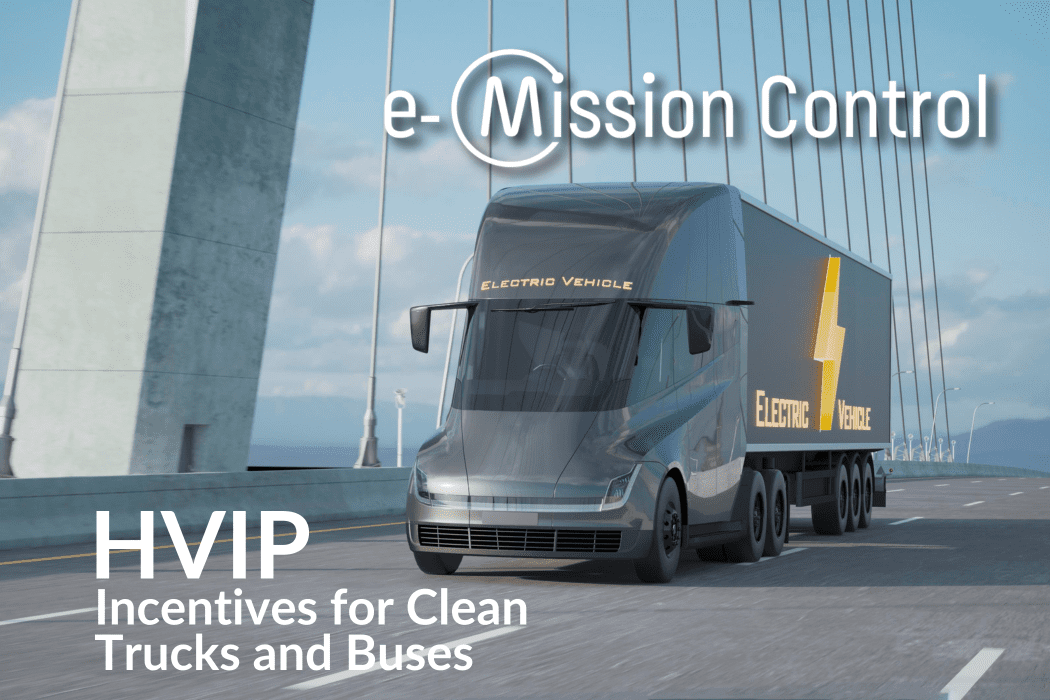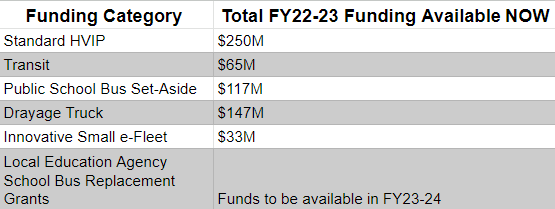

Do you own aging trucks or buses? Replacing them with cleaner vehicles represents a significant investment, which is why HVIP was created. California’s Hybrid and Zero-Emission Truck and Bus Voucher Incentive Project, or “HVIP,” aims to stimulate market demand and economic growth in the clean vehicle sector by providing vouchers for hybrid and zero-emission trucks and buses. The program also hopes to improve public health through reduced emissions, particularly in disadvantaged communities that are often disproportionately impacted by air pollution.
As of the end of November 2022, according to California Climate Investments, over $486 million HVIP funds have been allocated with over $155 million benefiting priority populations. HVIP has funded over 11,000 clean vehicles with 60% of that funding being spent in pollution-burdened communities.
The California Air Resources Board (CARB) launched HVIP funding in 2009 as part of the California Climate Investments. HVIP is the pioneer program in the U.S., showcasing the practicality, adaptability, and efficiency of “first-come, first-served” incentives aimed at diminishing the extra costs associated with commercial clean vehicles.
According to the US Environmental Protection Agency (EPA), in 2021, transportation accounted for the largest amount of greenhouse gas of any sector and medium- and heavy-duty trucks made up for almost a quarter of transportation emissions. The goal of HVIP is to accelerate the adoption of cleaner, more efficient trucks and buses in California.
Public and private operators of medium- and heavy-duty truck and bus fleets apply on a first-come, first-served basis at participating dealerships and manufacturers for low or zero emission trucks and buses. Incentives are applied at point-of-sale for the purchase of eligible vehicles. These incentives take the form of “vouchers,” or financial rebates, that significantly reduce the upfront cost of clean trucks and buses. The aim is to stimulate the market for these cleaner alternatives and speed up their adoption by making them more financially attractive.
Through HVIP, a total of $150 million is set aside for the 2022-2023 fiscal year to replace old internal combustion (ICE) school buses with new zero-emission buses. The funding extends to complementary charging infrastructure.
Base vehicle price breaks are from $20,000 to $240,000, depending on the vehicle you purchase. HVIP dealers learn the voucher processing system and are able to work with you whether you operate one vehicle or a fleet of hundreds.
On the truck side for example, certain Mack Truck electric models are approved to be part of HVIP. According to Fleet Equipment Mag, Mack’s MD Electric model is approved for a $85,000 voucher and the LR Electric model is approved for a $120,000 voucher through HVIP. The MD Electric is available in class 6 and 7 configurations and the LR Electric model is a heavy-duty electric refuse truck.

Source: Californiahvip.org
Visit for most current data
Funding for the HVIP program primarily comes from California’s statewide cap-and-trade program. The Cap-and-Trade program generates funds by requiring industries to purchase permits for the greenhouse gases they emit. The revenue generated from this system is then used for various programs aimed at reducing emissions, including HVIP.
As of January 1, 2023, small fleets of 10 vehicles or fewer can combine state funding sources with HVIP if the other program allows stacking. Programs that can now be stacked with California’s Hybrid and Zero-Emission Truck and Bus Voucher Incentive Project for small fleets include Carl Moyer Memorial Air Quality Standards Attainment Program,CARB Truck Loan Assistance Program and the Low Carbon Fuel Standard.
Clean school buses and infrastructure to charge these buses go hand-in-hand, which is why there is a joint application for HVIP public school bus set-aside funding and EnergIIZE charging infrastructure.
Funds are available now! Find the application form here, which is open until September 28, 2023.
For more on HVIP, visit here and here.
The successes of California’s Hybrid and Zero-Emission Truck and Bus Voucher Incentive Project could serve as an inspiration for other states looking to accelerate their transition to cleaner transportation. It offers valuable lessons in how policy tools can be used to stimulate the demand for green technologies, promote economic growth, and reduce emissions – all at the same time.